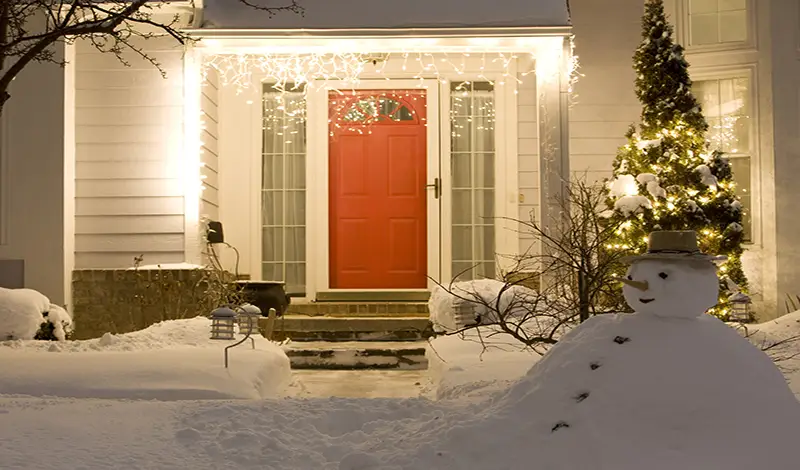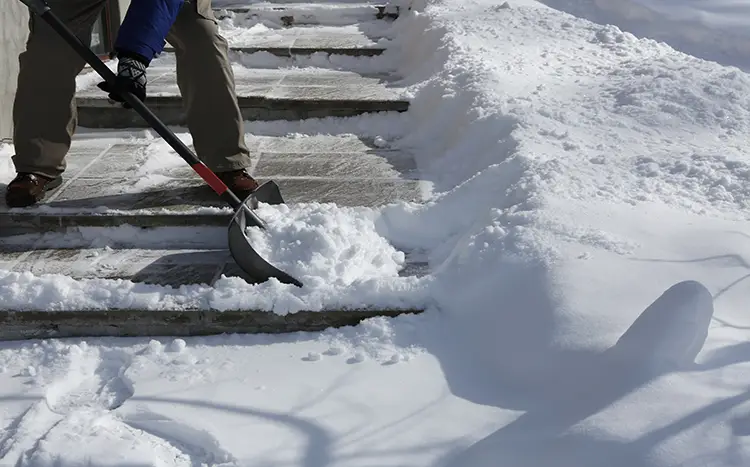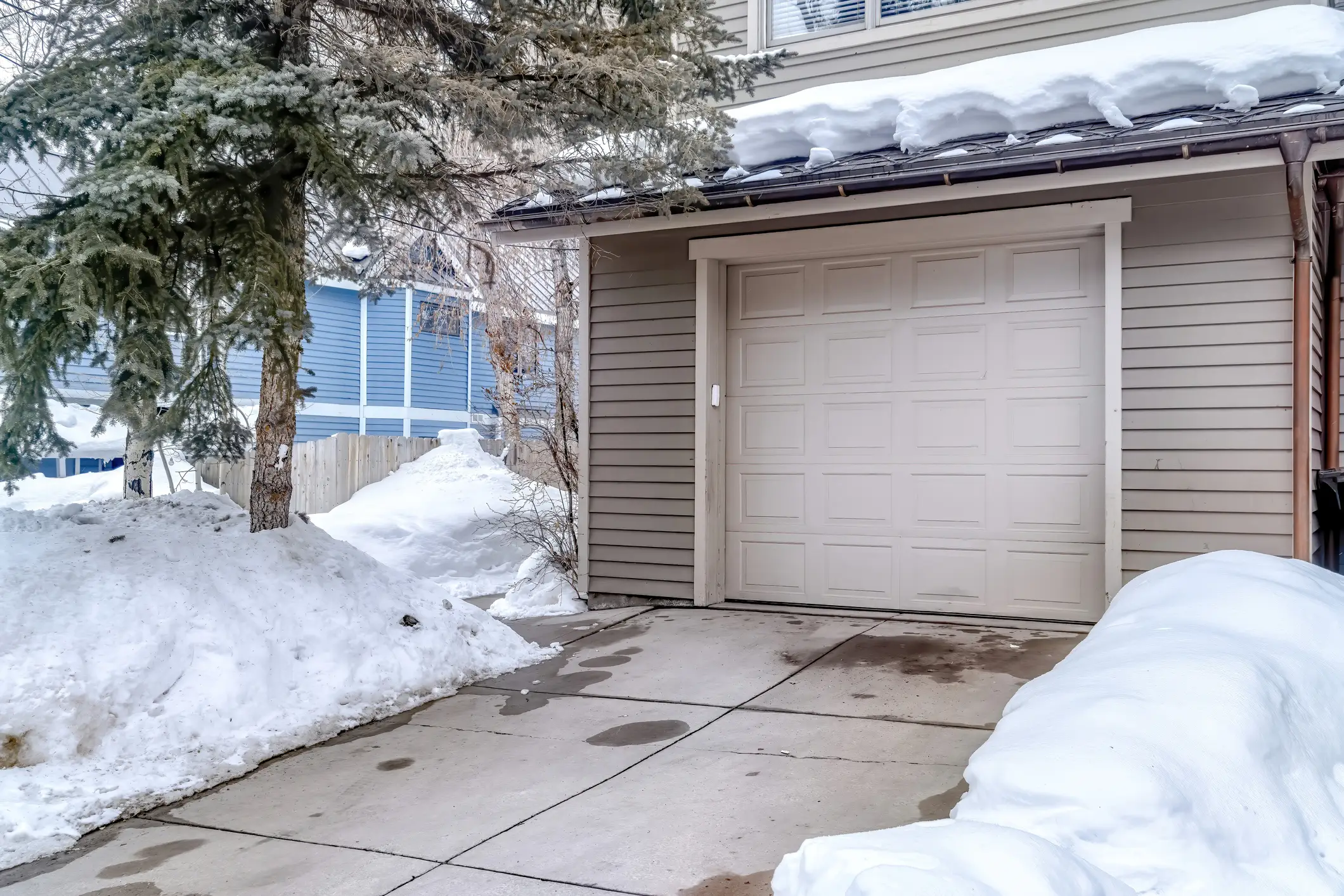Pros and Cons of Moving in the Winter
Published on September 6, 2024 | 6 Minute read

Melanie
Ortiz Reyes
Content Specialist
Moving to a new home is a significant life event, often accompanied by a mix of excitement and stress. While many people prefer to move during the warmer months, there are both advantages and disadvantages to relocating during the winter season. Let’s explore them.

Pros of Moving in the Winter
1. Lower Costs
One of the most significant advantages of moving in the winter is the potential for cost savings. The moving industry experiences its peak season during the summer months, with demand (and prices) typically dropping off in the winter. This decrease in demand often leads to:
- Lower rates from moving companies
- More competitive pricing for rental trucks
- Potential discounts on packing supplies
For budget-conscious movers, these savings can be substantial, potentially offsetting some of the challenges associated with winter relocations.
2. Greater Availability and Flexibility
With fewer people choosing to move during the colder months, you're likely to find:
- More available dates from moving companies
- A wider selection of rental trucks
- Greater flexibility in scheduling
This increased availability can be particularly beneficial if you have specific timing requirements or need to coordinate your move with other life events.
3. Less Competition for Housing
If you're moving to a new rental property or looking to buy a home, winter can be an advantageous time. With fewer people actively searching for housing, you may encounter:
- Less competition for desirable properties
- More negotiating power with landlords or sellers
- Potentially lower rental or purchase prices
This reduced competition can be especially valuable in hot real estate markets where housing can be scarce during peak seasons.
4. Cooler Weather for Physical Labor
While cold temperatures can be challenging, they can also be preferable to the sweltering heat of summer when it comes to the physical exertion of moving. Benefits include:
- Reduced risk of heat exhaustion or dehydration
- Less sweating, which can be more comfortable when lifting and carrying items
- Easier to stay energized throughout the day
Just be sure to dress in layers so you can adjust your clothing as you warm up from the physical activity.
5. Minimal Disruption to School Schedules
For families with school-age children, moving during the winter often aligns with school breaks. This timing can offer several advantages:
- Less disruption to the academic year
- Opportunity for children to start at a new school at the beginning of a semester
- More time for the family to settle in before school resumes
This alignment can help ease the transition for children, making the move less stressful for the entire family.

Cons of Moving in the Winter
1. Challenging Weather Conditions
Perhaps the most obvious drawback to winter moving is the potential for inclement weather. Challenges may include:
- Snow and ice making roads hazardous
- Slippery conditions increasing the risk of injury during loading and unloading
- Cold temperatures making the moving process uncomfortable
- Potential for weather-related delays or cancellations
These weather-related issues can add stress and unpredictability to your move, requiring careful planning and flexibility.
2. Shorter Daylight Hours
Winter's shorter days can impact your move in several ways:
- Less time to complete outdoor tasks in natural light
- Increased difficulty in navigating unfamiliar areas after dark
- Potential safety concerns when loading or unloading in low-light conditions
To mitigate these issues, you may need to start your moving day earlier or plan for additional lighting solutions.
3. Potential Property Damage
Winter conditions can increase the risk of damage to both your old and new homes during the moving process:
- Tracked-in snow, salt, and mud can stain carpets or damage flooring
- Icy conditions can lead to slips and falls, potentially causing damage to walls or doorframes
- Cold temperatures can make certain materials more brittle and prone to damage
Extra care and protective measures are necessary to prevent these types of damage during a winter move.
4. Impact on Plants and Temperature-Sensitive Items
Certain belongings may require special consideration when moving in cold weather:
- Houseplants can be damaged or killed by exposure to freezing temperatures
- Electronics, musical instruments, and artwork may be sensitive to extreme temperature changes
- Liquids in glass containers may freeze and expand, causing breakage
These items may require special packing or transportation arrangements, adding complexity to your move.
5. Holiday Season Conflicts
Depending on your specific moving dates, you may encounter conflicts with winter holidays:
- Reduced availability of moving services around major holidays
- Potential for increased traffic due to holiday travelers
- Personal stress from balancing moving tasks with holiday preparations and celebrations
Careful scheduling and communication with your moving company can help minimize these conflicts.
6. Reduced Curb Appeal for Selling
If you're trying to sell your current home as part of your move, winter can present challenges:
- Snow-covered yards make it difficult to showcase landscaping
- Darker, dreary days can make homes appear less inviting
- Potential buyers may be less active in the market during winter months
These factors may necessitate additional staging efforts or patience in the selling process.

Tips for a Successful Winter Move
If you decide that a winter move is right for you, consider these tips to ensure a smooth relocation:
1. Monitor weather forecasts: Keep a close eye on weather predictions and have a backup plan in case of severe conditions.
2. Prepare both homes: Ensure walkways are clear of snow and ice, and lay down protective coverings to prevent interior damage.
3. Pack strategically: Keep winter essentials easily accessible, and take extra care with temperature-sensitive items.
4. Allow extra time: Build in buffer time for potential weather-related delays or slower travel.
5. Dress appropriately: Wear layers, warm boots, and gloves to stay comfortable throughout the moving process.
6. Stay flexible: Be prepared to adjust your plans if weather conditions change unexpectedly.
7. Hire professionals: Experienced movers can navigate winter challenges more efficiently and safely.
Moving in the winter comes with its own unique set of advantages and challenges. While you can benefit from lower costs, increased availability, and potentially smoother transitions for your family, you'll also need to contend with weather-related obstacles and some logistical hurdles.
Ultimately, the decision to move in the winter should be based on your individual circumstances, priorities, and risk tolerance. By carefully weighing the pros and cons and implementing smart strategies, you can successfully navigate a winter move and start the new year in your new home.
Remember, regardless of the season, thorough planning and a positive attitude are key ingredients for a successful move. Whether you choose to brave the winter chill or wait for warmer weather, approach your move with patience, flexibility, and organization, and you'll be settling into your new home before you know it.